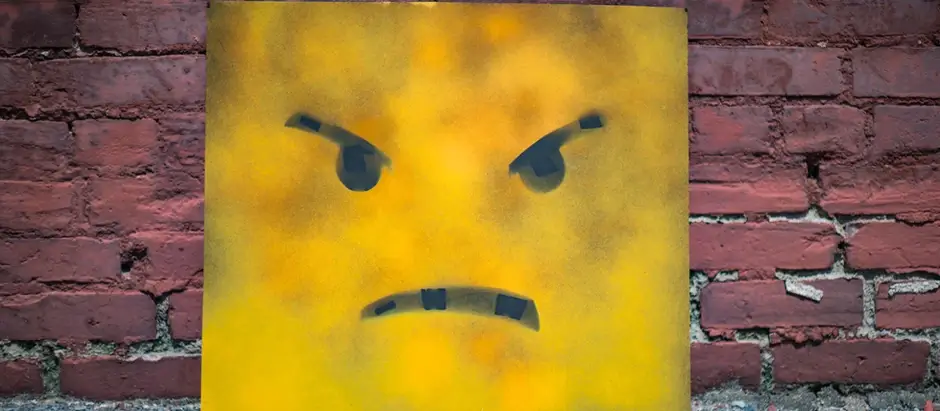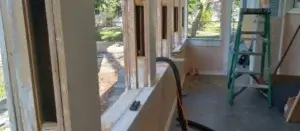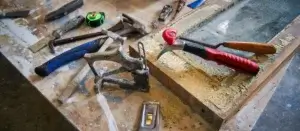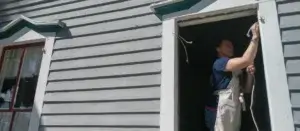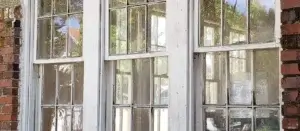
I’ve always been passionate about how Client Care/Job Setup/Organizing the Work Beginning and End should be conducted. This is nothing new. All my long time employees know this. I even have old videos about it that were made years ago. I’ll post one of those videos below. It is called, “Beat Your Client To The Punch.”
Protect yourself from unnecessary client judgment. Everyone says they aren’t judgmental, but it isn’t true. Clients are very judgmental, and rightfully so, they are paying us. I wonder if the client ever wonders if our personal presence aligns with what they see online? Of course they do! They are comparing us not only with that, but with the last contractor they hired, hoping we aren’t like them, but secretly bracing themselves….
There are a number of lists below, but don’t think of it as exhaustive. Think of it as don’t be an ignorant, knuckleheaded, thoughtless person who doesn’t realize the importance of taking care of people and their stuff. When you are in someone’s home or place of business – you are entering their world. Do not force your world on them. Adapt to theirs.
Initial client protection.
- Park where you don’t block their driveway. Don’t block their neighbor’s driveway either. Neighbors talk. The neighbor’s judgment quickly translates into client judgment. Treat the neighbor the same way you would your client. The neighbor might be your next client.
- Don’t walk on the client’s grass. Find another way. They didn’t have a trail where you have to work before you got there. See to it there isn’t one when you leave.
- Know the plan. Which windows are the Red shirts going to work on first, second, third and so forth? It would be helpful to know this ahead of time.
- Get there at 8:00. Actually before. 8:00 starting time means get there 15 minutes ahead of time, having yourself ready to actually begin producing at 8. Don’t get there at 8:01 and then do your formalities, hugs, hellos and bathroom trips. Take care of your business beforehand so you can take care of company business.
- Have your mask ready. Don’t make the client ask for it. They don’t know you, the people you hang around with or the places you have been. Help them feel comfortable with your presence.
- Start the day clean. Wear clean clothes and the proper colored shirt. Yellow shirts aren’t allowed to wear red or black shirts. Yellow shirts may only wear a grey shirt if they’ve been promoted to grey shirt. Red shirts can wear any company color they want except black. They’ve earned it.
- Don’t smoke on the job. Do not smell like smoke. Don’t smoke where clients can see you. Don’t smoke where potential clients can see you. When you walk back into the building after you’ve been smoking and the client looks at you funny, covers their nose or sneezes – that’s judgment. The office will hear about it. Then you will hear about it. Avoid this by not smoking.
- Practice self awareness. Pay attention to your appearance. Pay attention to your smell. Pay attention to your attitude. Gum is a good thing to have around because you might have bad breath.
- Put a company sign in the front yard. Put it in a place that can be seen well. Make sure its straight. Make sure it’s not crooked.
- Remove the client’s doormat. Do this, whether front door, back or side. Replace it with a company tarp to wipe your feet on before you go in.
- Wipe your feet. Before you go in, be mindful not to track in dirt on your shoes.
- Ask where you can put the company tools. Ask client about acceptable end of day tool storage locations. Don’t just assume. Ask. Find out.
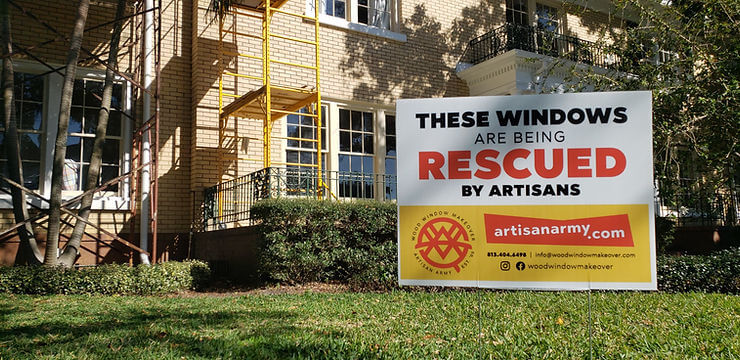
Entering the house/workspace area.
- Use tarps on paths to the works area. Put tarps down inside the house from the front door to the works space. Only walk on tarps.
- Use tarps on floor at the work area. Put tarps down on floor in front of work area to protect the floor.
- Pay attention to which tarps you put where. Dirty, stained tarps are better for wiping your feet on. Clean, more presentable tarps are better placed in the client’s line of sight.
- Place plywood over the tarps. Put it over the top of the tarp on the floor in front of the window you are working on to protect the floor from dropped tools, possible scars.
- Use extension poles and plastic. Create an enclosed containment/barrrier around the work space. Heavy gauge plastic means 2 mil or better.
- Cover the furniture with plastic. Apply painters plastic .31 mil over furniture and client’s belongings to create an additional dust barrier.
- Create necessary access. Do this carefully without destroying the client’s bushes or trampling their grass. Set up ladders and scaffolding as necessary to access outside work.
- Protect the ground outside the window. Cover the area under the outside of the window with tarps/plastic/plywood
- Working on a roof? Take special precautions to protect shingles with tarps, cleaning up as you go.
During the Work
- Prepare the tools. Put all the tools into the containment before starting work.
- Keep the mess contained. Do ALL dusty creating activities such as using the paint shaver, proscraper or orbital sander while in the containment.
- Clean as you go. With a vacuum.
- Stay put. Once in the containment, do not leave unless absolutely necessary.
- Keep your hands off the walls. Finger prints, hand prints, smudges on their nicely painted walls = judgment. Not only that but someone has to clean that off before we finish. That someone is you.
- Keep containment clean. With a vacuum.
- Use 5 gallon bucket for trash. Empty it if need be.
- Apply primer to the work methodically and cleanly.
- Be prepared for and prevent paint spills. Have a bucket of sawdust around. There’s nothing better than sawdust in a paint spill emergency.
- Be prepared for rain. This means have the plywood ready to cover the window openings at all times. This means if it looks like it’s going to rain, it is. Make sure all the red shirt’s tools are covered up or put away. This is why we put up the shade structure – it works surprisingly well for keeping rain off of tools. Have plastic ready at all times. All times.
After the work, when everything has been primed in.
- Mist inside the containment. This is to control dust. A spray bottle is best for this. We’ve also used a garden sprayer on big jobs. The idea is keep the dust from getting out of the containment. The water is best for this. Don’t overdo it and flood the client’s house.
- Collapse the containment onto itself. Don’t remove the plastic any old way. Fold up the plastic so that everything stays in the plastic.
- Throw away all used plastic. All used plastic is thrown away in large, heavy duty plastic trash bags that are then sealed tightly to keep dust from escaping.
- Use the HEPA vacuum. Do not use a regular vacuum. HEPA vacuums are designed to not release ANY dust back into the air. Vacuum the work place. Vacuum the window stool. Vacuum the floor. Vacuum the stairs. If there’s any question, vacuum it.
- Remove tarps properly. Fold the tarps in on themselves to keep debris inside and remove them to the outside of the house. Only empty tarp trash into trash cans where dust can’t fly back into the house. Do not let your tarp dust get on their BMW, Mercedes or Rolls Royce. Or their Toyota or Honda. This also applies to vacuum dust. Do not empty vacuum dust anywhere near the building.
- Plywood the openings.
- Swiffer the floors. Not only will this lick up any dust residue left over, the client will appreciate the smell.
- Wipe it down. Wipe down all surfaces that contracted dust with the Swiffer wipes. This means you have to look for it. The Client knows where the dust is. You should too. Find it and wipe it.
- Put furniture back in its proper place.
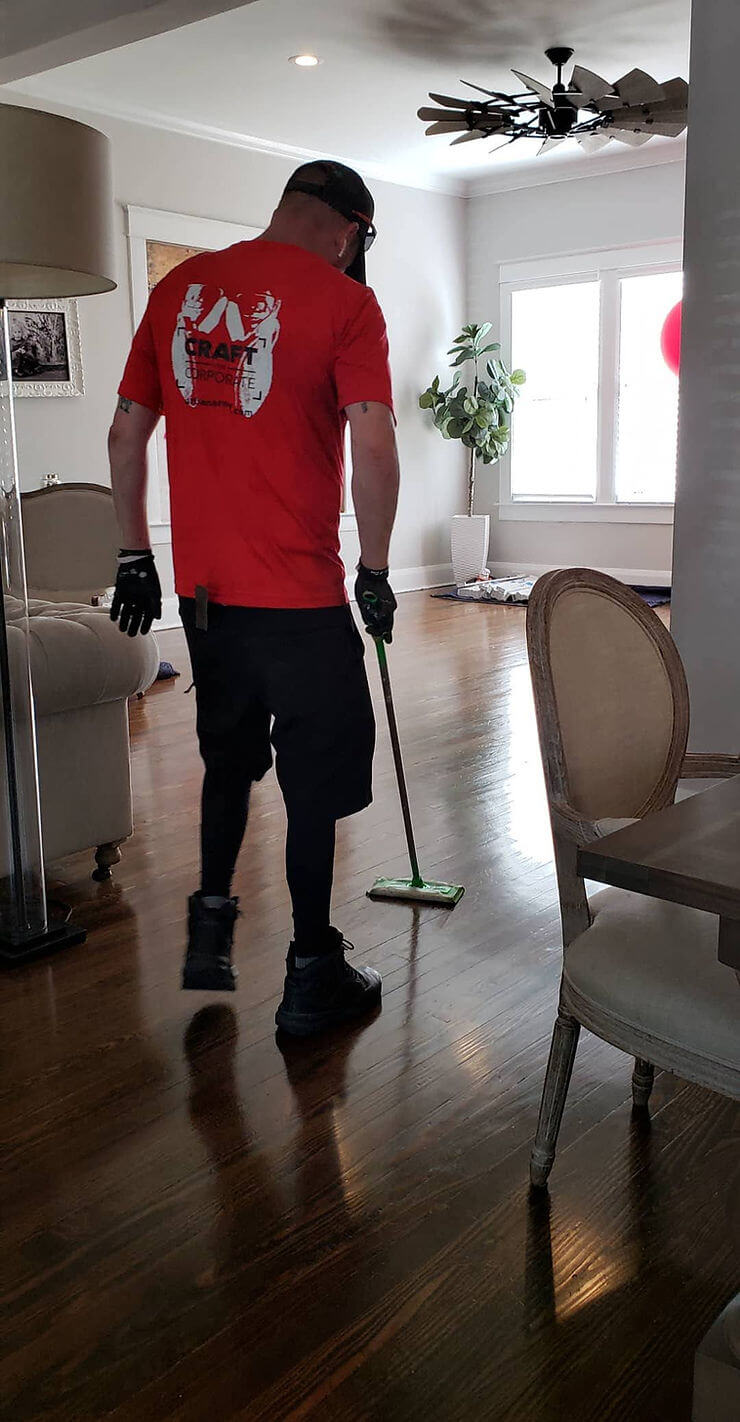
Jobsite breakdown
- Extension cord roll up. Do not roll them up your way. Roll them up Steve’s way. Watch the video if he hasn’t shown you personally. It’s on YouTube.
- Break the tool stations break down. Blow out the table saws, chop saws etc… in a way that doesn’t blow dust onto their Rolls Royce, Harley Davidson or Toyota Corolla.
- Put the tools away for the Red Shirts. Learn where the Red Shirts want their tools put away and how they want it done. And do it that way. Get good at it.
- Protect the Client’s staging area. Having found out where the client will accept the tools being stored – store them nicely. Organize your tools, ready for the day. Cleanly.
- Sweep the outside workspace. It should be cleaner when we leave than when we started. Then blow away micro debris with a battery blower.
- Clean work area beneath the window. This means picking up every little piece of trash and debris that we put there, and probably that anyone else put there.
- Clean paint brushes and store them properly. Yellow shirt job is to clean the Red Shirt’s brushes to the Red Shirt’s standard. If you don’t know how to clean a brush properly, you will end up buying it.
- Clean up after the other trades. This will surprise the client and highlight what pigs other contractors can be. The way you feel cleaning up after other trades is the way clients feel if they have to clean up after you. Let this sink in.
- Ask the client if it’s clean enough. . If it isn’t, make it acceptable.
- Say goodbye to client.
